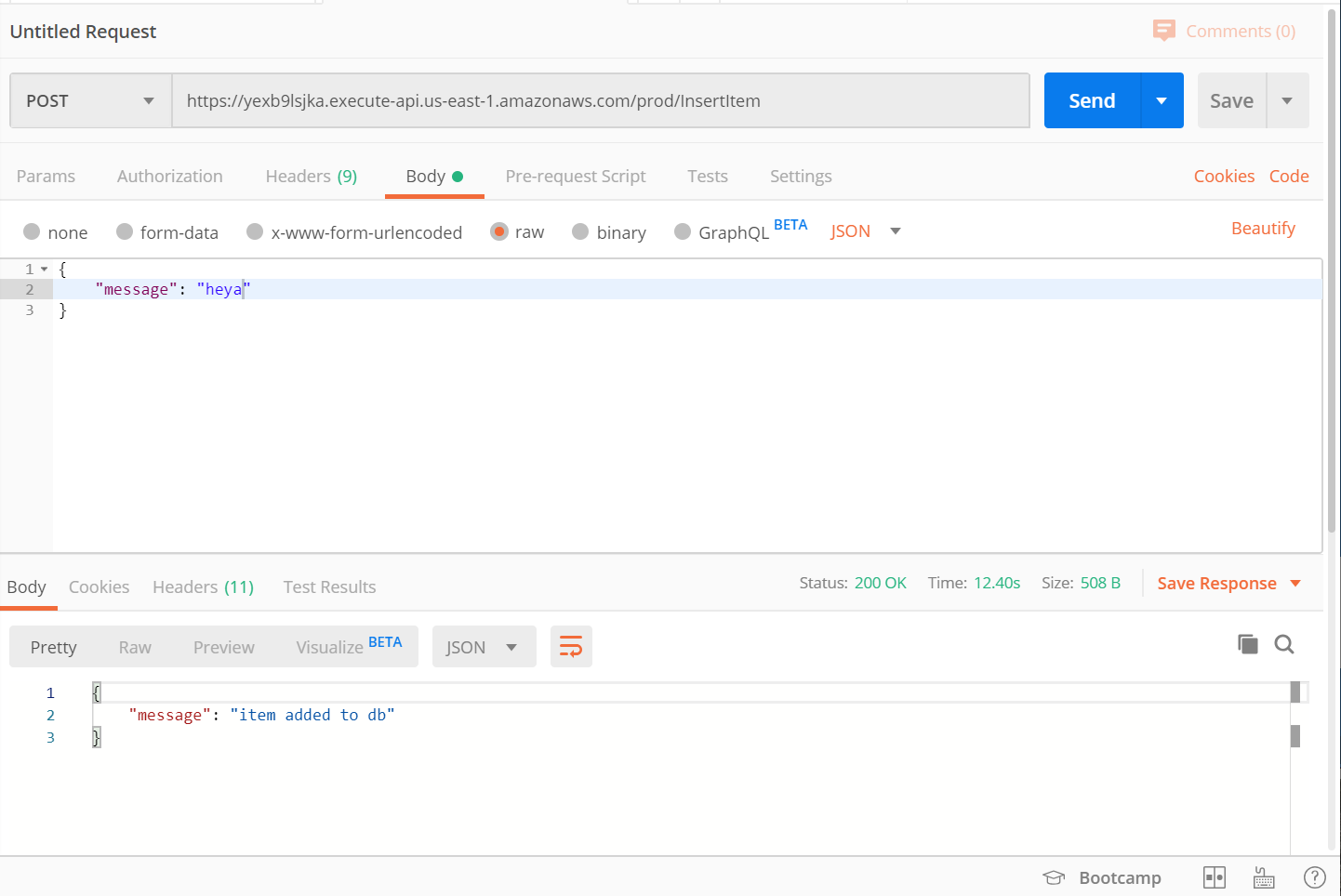The Dynamo Streamer pattern was taken from from this Tweet by Eric Johnson. He later went on to use this pattern to build a lambdaless, serverless url shortener.
This is a variation on The Simple Webservice pattern from Jeremy Daly only instead of a lambda being connected to the apigateway, the dynamodb is connected directly and the api gateway uses templates to transform the incoming message to insert the data. A lambda then listens for events coming from dynamodb streams and can be used to do data transforms after insertion meaning if an error occurs you lose no data.
"When thinking about #Serverless architectures, consider how much of your processing can happen AFTER the data is saved. Thinking asynchronously can lead to greater resiliency and often, less code."
After deployment you will have an API Gateway with one endpint (/InsertItem) that takes an application/json payload via POST. It will insert the contents of the message field into DynamoDB where that new event will be streamed to a Lambda that will print the contents to the console. To see the full flow you need to look in the AWS Console and look in DynamoDB and the Lambda Cloudwatch logs
{ "message": "hello" }
The cdk.json file tells the CDK Toolkit how to execute your app.
This project is set up like a standard Python project. The initialization
process also creates a virtualenv within this project, stored under the .env
directory. To create the virtualenv it assumes that there is a python3
(or python for Windows) executable in your path with access to the venv
package. If for any reason the automatic creation of the virtualenv fails,
you can create the virtualenv manually.
To manually create a virtualenv on MacOS and Linux:
$ python -m venv .env
After the init process completes and the virtualenv is created, you can use the following step to activate your virtualenv.
$ source .env/bin/activate
If you are a Windows platform, you would activate the virtualenv like this:
% .env\Scripts\activate.bat
Once the virtualenv is activated, you can install the required dependencies.
$ pip install -r requirements.txt
At this point you can now synthesize the CloudFormation template for this code.
$ cdk synth
To add additional dependencies, for example other CDK libraries, just add
them to your setup.py file and rerun the pip install -r requirements.txt
command.
cdk lslist all stacks in the appcdk synthemits the synthesized CloudFormation templatecdk deploydeploy this stack to your default AWS account/regioncdk diffcompare deployed stack with current statecdk docsopen CDK documentation
Enjoy!

